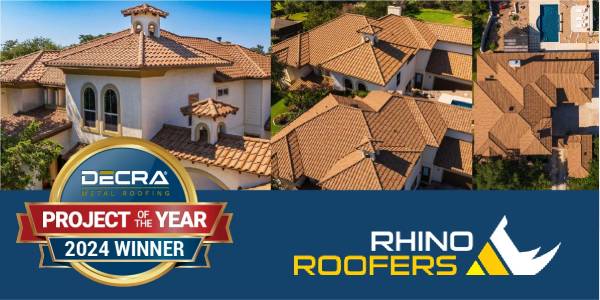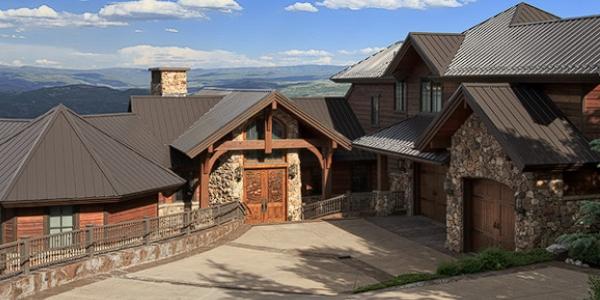The Benefits of Insulated Metal Panels

By Metal Sales.
Insulated metal panels are more than just a barn aesthetic, they are a sustainable and viable option for any construction project you have coming up.
Both contractors and homeowners are increasingly turning to insulated metal panels as a cost-effective and simple-to-install alternative to other building materials. These panels, also known as sandwich panels, are composed of two metal sheets with a foam core in between. This design offers a range of advantages, such as a finished interior and exterior, energy efficiency and rapid installation.
If you still think that metal panels belong on farm buildings, you’ll be pleasantly surprised to learn that we’re moving away from traditional stick-built homes and exploring a wide variety of new building materials that can offer sustainability, energy efficiency, and design flexibility. These goals, paired with a modern aesthetic are driving the popularity behind a new trend in metal panels for residential home construction.
Design flexibility
Insulated metal panels (IMPs) provide the most design flexibility of all metal products. Their strength and durability allow these panels to support heavier load-bearing designs, allowing them to be used in a variety of ways. IMPs are available in all the same styles as single sheet metal panels, including smooth finish and corrugated surfaces so homeowners can enjoy more flexibility in designing their homes while taking advantage of the insulating properties of IMPs.
Insulated metal panels are a popular choice for everything from architectural details to simple builds. While this building material was once limited to agricultural and industrial applications, a more modern rendition has found its way to mainstream residential construction and both contractors and homeowners are loving the design flexibility that it provides.
Easy installation saves time
These panels are essentially finished on both sides and already contain appropriate installation, shaving steps off of the construction process. The easy installation is favored by contractors who can complete jobs in less time. And that time savings turns up in lower construction costs which homeowners love.
Not only are there fewer steps involved, but these panels require less specialized equipment on-site adding up to layers of savings. Most IMPs are self-aligning or use tongue-in-groove joints for simple assembly.
Cost-effective building material
While there is more material to an IMP than a traditional metal panel, the overall product is a cost-effective alternative because it requires less labor to install. The time and money saved during construction make a noticeable difference in total building costs. Plus, contractors can skip the step of having an insulation company come in to blow-in insulation during construction since these panels come with an insulated core.
As with any building material, costs can vary based on quality, product, and supply and demand. For IMPs, the cost can range anywhere between $7 to $14 per square foot compared to a total construction cost of $10 to $25 per square foot for most other building materials.
Energy efficient performance
The insulated foam core really boosts the energy-efficient performance of insulated metal panels. In fact, most IMPs on the market have the highest thermal values available. This means that they perform the best when it comes to controlling airflow into and out of the building – keeping your climate-controlled air where it belongs.
And when we say that insulated metal panels perform well on energy efficiency, we really mean it. High-end IMPs can rate between 5 and 7.1 per square inch while the average in the industry is between three and four per square inch. But what does that mean, exactly? If you compare this thermal rating to a traditional stick-built house using wood, you’re likely to see much lower numbers. For example, the thermal rating of wood is just 1.41 per square inch.
Long-lasting durability
There’s no compromise when it comes to the strength of steel. Even the foam core insulation is notably proven to enhance structural capabilities, making these panels an easy choice for heavier loads and providing homeowners with peace of mind that their home will stand the test of time. Many homeowners are choosing metal panels for their strength and sleek design, enjoying that these materials are also low maintenance and eco-friendly.
Steel is well-known for its durability and the insulated metal panels made with this metal are no different. On average, the typical lifespan for a metal panel is 50 to 60 years. That’s two or three times longer than vinyl siding. What’s more is that these panels last for decades with little or no maintenance and that’s where they really save homeowners a lot of money over the long run.
Safer than many building materials
On top of all the other great things that IMPs have to offer, these panels can improve safety ratings and lower insurance costs. In some buildings, it’s required to choose materials with specific fire safety ratings. Insulated metal panels can often include up to three-hour fire safety ratings. This relates directly to how quickly flames will spread through a building.
When it comes to meeting modern building codes without driving up prices, insulated metal panels are the obvious choice. Steel is obviously flame-retardant. But many consumers question the foam core. Here’s the deal – when foam is used as an insulating material in the United States, it must adhere to very strict fire safety ratings. In most cases, the foam is manufactured with flame-retardant chemicals that offer another layer of protection to inhibit the spread of fire.
Final thoughts on choosing insulated metal panels for your home
There is a long list of benefits of choosing insulated metal panels during construction. Sustainability, cost, durability, and a low-maintenance solution that looks great for years to come often top the list for many homeowners. The time saved during construction and the potential to lower utility costs with energy-efficient savings is just icing on the cake. Modern technology and home design trends are embracing the sleek, attractive look of metal panels making insulated metal panels more common in all kinds of residential neighborhoods.
If you’re building a new home this year, insulated metal panels are well worth a closer look. You’ll find that these panels are available in a wide selection of colors and styles and they just might be a great way to save time and money on your build.
Have a question? AskARoofer.
Find your local roofing contractor in the RoofersCoffeeShop® Contractor Directory.
Original article source: Metal Sales









Comments
Leave a Reply
Have an account? Login to leave a comment!
Sign In